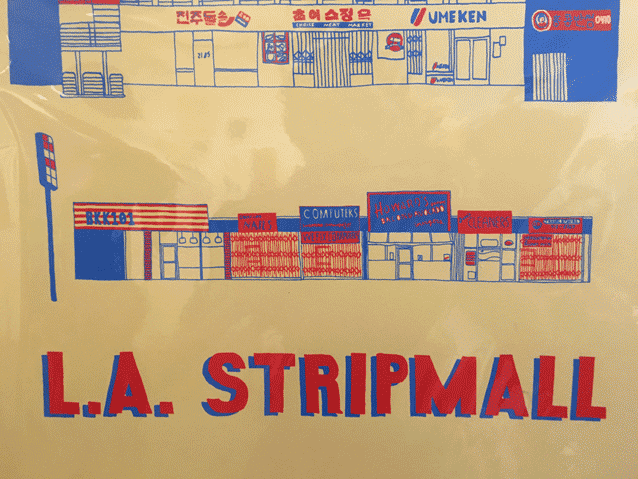
Screenprint by Polkela, seen at Co-Lab Gallery.
In his fourth week in Los Angeles, Michael Anthony Farley discovers that there’s not enough to do on weekdays and way too much to do on weekends. Here’s how he spent the weekend. Everyone loves Ray and Charles Eames, and erotic art.
Catch up on Week One, Week Two (and Week Two, Part Two), and Week Three.
Friday 7/14
I am working from a Starbucks in a nondescript strip mall near a Gold Line station in Pasadena. I stand in line for my second coffee, and give my name to the barista, when the man behind me asks “Michael? Michael what?” I turn around and realize I’ve just run into an old buddy from art school in Baltimore who I haven’t seen since we graduated. We chat about how we both ended up in the same suburban California Starbucks, thousands of miles from our hometown.
He moved out here to work in visual effects on films. Now, he’s attending a graduate program at the Art Center College of Design a few blocks away, learning virtual reality skills for the coming boom in demand. He tells me that he, like all the contract artists who work on big blockbusters, is under constant surveillance by the studios to make sure footage doesn’t leak as it did in the X-Men Origins: Wolverine debacle. I immediately start mentally formulating the plot of a William Gibson-esque thriller.
Hopping on the Gold Line back into the city, I transfer to the subway, on my way to the Expo Line—the newest and arguably most-praised piece of L.A.’s odd rail network. It’s irritating that you have to tap your card for each transfer between trains and its unclear if the card gets charged each time, but otherwise I’m pretty impressed by how much smoother and cleaner L.A.’s trains are than aging East Coast systems. I feel slightly vindicated for my uncommon decision to take public transit when I look down out the window of the elevated train and see untold millions of cars sitting in seemingly endless gridlock. The opening I’m heading to (oddly, the sole art event I could find on a Friday evening) is at The Landing, a gallery about 16 miles Southwest from my starting point. Google Maps tells me the trip will take around an hour and a half by public transit. Not wanting to repeat my usual mistake of showing up too late for L.A.’s early-to-bed art scene, I plan to get there around 6 p.m.
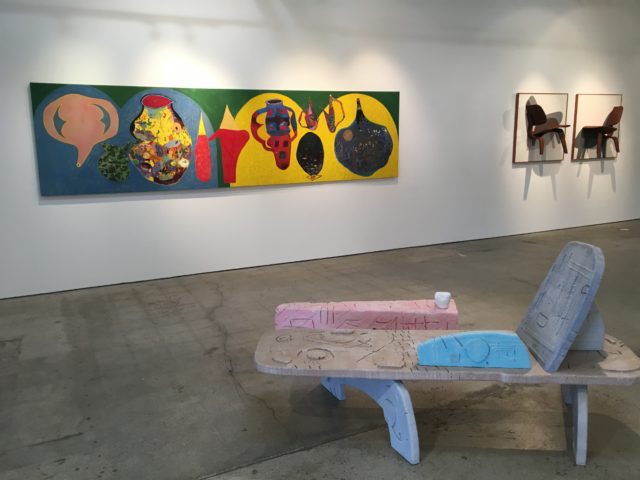
(L-R) Ryan Fenchel, “Sidereal Procession, the Adept in Public”; Don Edler, “Chaise Lounge for Celeste and Unmonumental Table,” 2017 (with John Zane Zappas Ashtray); Gary Knox Bennett, “Pair of Eames Chairs Assemblage,” 1959.
By some strange magic of perfectly-timed transfers, I actually arrive to the opening early. For about half an hour I’m the only one in the gallery, and the staff are shocked that I beat rush hour traffic and found parking. I explain that I took the train, which has an elevated station nearly directly above the gallery.
“Wow. What’s that like? I didn’t know anyone used it!”’
I wouldn’t say the train was packed, but it was far from empty. The opening on the other hand, remains pretty dead for the majority of time I hang around, which is confusing because the show is great and they’ve laid out the most impressive buffet of snacks I have ever seen (another strike of good luck, since my opening/dinner buddy cancelled on me last minute).
The group show, The Useful and the Decorative, pays tribute to The Landing’s former identity as a design gallery. It’s a collection of art objects that allude to functional designwares from plates to furniture. It’s right up my alley, as I love both painterly surfaces and midcentury modernism—two things that are rarely conflated outside of nonrepresentational painting. Here, though, design classics such as Le Corbusier’s chaise lounge and the much-treasured Eames recliner populate endearingly wonky paintings of interiors by Gabrielle Garland. She’s cleverly balanced expressive brushwork with subjects iconic enough to be legible despite warped perspective. There are no figures in the paintings. Staring into each domestic space, I imagine this is what it must be like to take an ayahuasca trip in one of those immaculate California homes from the pages of Dwell. It occurs to me that’s probably not an uncommon occurrence.
The other highlight of the show is Don Edler’s work, which “fossilizes” contemporary design objects on the verge of obsolescence in hydrocal—iPhones, calculators, credit cards, and so forth. One piece in particular, “Anthropocentric Tablet” reminds me of Michael Jones McKean’s recent dystopic anthropology museum at The Contemporary. In both installations, there’s a sense that the world as we know it will disappear, and our material culture will be a cryptic piece of archeology for another to interpret.
I take the train back Downtown and an old friend from Baltimore, Neale, picks me up at the end of the line to catch up. We’re sitting on his balcony in a particularly picturesque corner of Echo Park when I notice a friend from Berlin has checked in on Instagram a few blocks away. I message my friend, filmmaker Yony Leyser, and find out he’s in town touring his documentary Queercore: How to Punk a Revolution. He invites us to an event at the Tom of Finland Foundation nearby and we decide to walk over.
As I should’ve come to expect by now, the walk takes far longer than we anticipated and everyone’s already hopping in Ubers by the time we arrive. Tom of Finland’s former home strikes me as surprisingly cutesy (a sentence I never thought I would type). Neale explains, “Navigating L.A. by Google Maps always fucks me up because you zoom in and there are grids within grids and the blocks are huge. It’s like watching Powers of 10.” Despite its Bermuda-Triangle-like navigational challenges, Los Angeles constantly redeems itself with Eames references.
We’re given an address to a secret-ish warehouse venue downtown, where a mini-festival of queer erotic performance art and video screenings is taking place. As soon as we arrive, someone wins a door prize comprising dildos in various shapes and sizes. A performer described as “a proudly non-binary artist who prefers to be identified by their LinkedIn profile” begins lip-synching to Alice DeeJay’s 1999 club hit “Better Off Alone” while presenting their anus.
Having spent my day criss-crossing vast distances, I am deliriously tired. We’re being steered to some chill-out installation apparently intended to re-center our sexual qis or realign our erotic chakras or cleanse our auras (or something with crystals?). I’m told there’s no alcohol and I realize I probably can’t get through whatever this is without it. Yony disappears on foot to find an open liquor store. We warn him that after midnight in L.A. is the equivalent of 4 A.M. in any other city, but he persists.
He rounds a dark corner and it’s the last we see of him.
Saturday 7/15
I wake up on Neale’s couch and walk another deceptively far, scorching hot “10 blocks” to a friend-of-a-friend’s apartment who is a curator. He shows me this drawing by Bodega Vendetta and never have I wished more that a work on paper was an animated GIF.
Over the course of hours, I receive multiple conflicting texts from friends encouraging me to attend different events that all begin around the same time many miles apart. An art magazine release party! An opening in Culver City! An opening an hour away in the opposite direction! A party at a collector’s house! A party at a gallerist’s house! Yony’s screening! A party that’s “the L.A. pop-up of Club Glam”! (I am told that saying something is “The L.A. pop-up of _____” lends it credence, even if it’s a thing that hasn’t actually existed anywhere else.) I think about all the weeknights I’ve spent looking for something (anything) to do here and realize L.A. has the most extreme case of problematic weekend-loading I have ever encountered.
I settle on attending The Co-Lab Gallery’s closing party with Liz Eldridge because I have heard good things from several friends about the Highland Park institution. Many of my peers in Los Angeles have small but impressive art collections, and a big chunk of those works came from Co-Lab. The gallery functions more like a retail space than a traditional white cube model—it’s jam-packed with art hung salon-style, with tables full of ceramics and racks of prints and other artist-made knick-knacks. This is a display strategy that normally would drive me crazy, but here it works because so much of the art is actually good and the volume allows the gallery to keep prices accessible. There are a handful of paintings priced under $100 that I’m seriously tempted to buy, but remember that figure represents about one week’s worth of necessary Uber rides here. I’m slightly ashamed that I’ve allowed L.A. to add another step in Maslow’s Hierarchy of Needs.
I’m introduced to gallerist Kristin Hector, who first opened the space in Koreatown seven years ago, but has been in Highland Park for the past three. I ask her why the gallery is closing, and she blurts out “It’s not gentrification backlash! Everyone always assumes that!” (As in many pockets of East L.A., art galleries such as Co-Lab and “hipster” businesses like coffee shops and yoga studios along York Boulevard are frequently targeted by anti-gentrification graffiti.)
She explains that she wants to move into a larger space and shift the focus of the practice. I ask her if the jam-packed hang is indicative of every show or just a “going-out-of-business” sale vibe.
“Oh this is what all of our group shows are like!” she explains, between shouting out unthinkably reasonable prices across the room, “I love so many different aesthetics. It’s fun to see different styles come together—this is a good example,” she gestures to a wall of paintings that alternate between provisional painting, expressionist figuration, and realism, “Always colorful! Always a little ridiculous, and sometimes dark but vibrant!”
Liz and our friend Brittney are enthusiastically flipping through a rack of prints and other works on paper, asking each other for advice. Since wall space is already at a premium in Liz’s sunny Craftsman bungalow, I suggest investing in one painting for the same price as several cheaper pieces. We move around the room, deliberating. We’re both drawn to Julian Tan’s small acrylic paintings on panel. Each is obsessively jam-packed with detail, describing chaotic domestic spaces. (Naturally, as in the Gabrielle Garland paintings from the night before, Eames chairs make cameos. I start to think that if all artists in L.A. have such comfortable and tasteful furniture, it makes sense people become homebodies when they move here from cramped East Coast apartments).
Liz—ever the dramaturg—begins excitedly fabricating narratives for each mise-en-scène: “This is clearly a room of privilege; it’s a kid who doesn’t understand what he has! I feel like this is the teenage fantasy of someone who grows up to be in the alt-right,” gesturing to an interior full of swords, video games, and other boy toys. Then, “Wait, is he making meth in this one? Meth AND an Eames chair?”
The paintings are all hypnotically captivating, but one detail (other than the titular cinematic reference) draws me to “2001 IS ON, LET’S CHILL”. On the coffee table a copy of Haruki Murakami’s “1Q84” is described with a remarkable economy of tiny brush strokes. It’s one of my personal favorite books of the past few years, so I could spot its signature cover anywhere, but Tan’s ability to squeeze so much charmingly shaky detail into a few square millimeters is still impressive. Its inclusion also complicates the “bro-iness” of the other objects in the homes—one of the book’s main plot lines is in essence a feminist revenge tale.
Liz ends up purchasing the piece (and plenty of works on paper too) and we leave ecstatically talking about how good owning art feels. On the way out, we overhear that the gallery’s new reincarnation will actually be as an art rental facility for film sets in North Hollywood, close to Studio City and its endless sound stages. At first we’re disheartened to hear that—Co-Lab seems to have filled a niche position in the city wherein young creative types could actually afford to support their peers. I then remember Mel Chin’s collective GALA Committee, which infiltrated the set dressing of Melrose Place with conceptual artworks. Kristin Hector seems to have a penchant for curating works with sneaky details, and I’m optimistic Co-Lab’s next incarnation might carry that torch.
L.A., after all, owes its cultural gravitas to the intersections of art and spectacle, counterculture and schlock. Who knows what books might show up on the coffee tables of shitty sitcoms and soap operas in the years to come? As we dive ever deeper into this latest battle of the culture wars, tactics like that will only become more vital than the first time around.


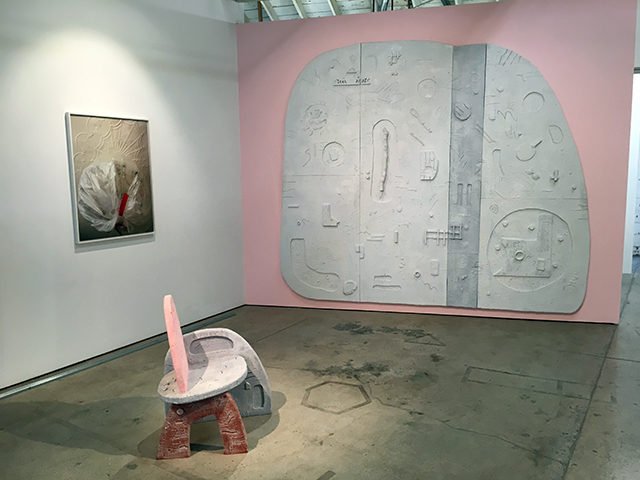

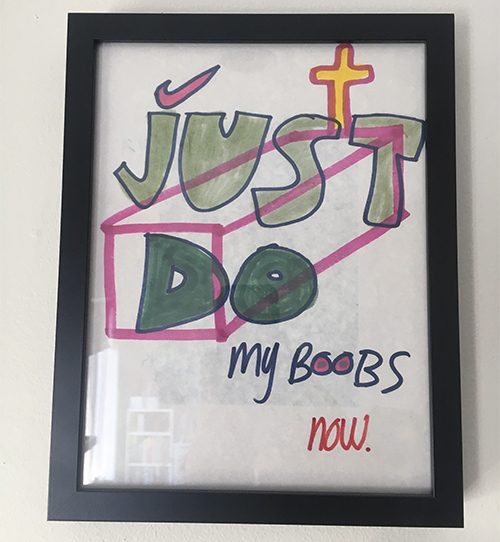
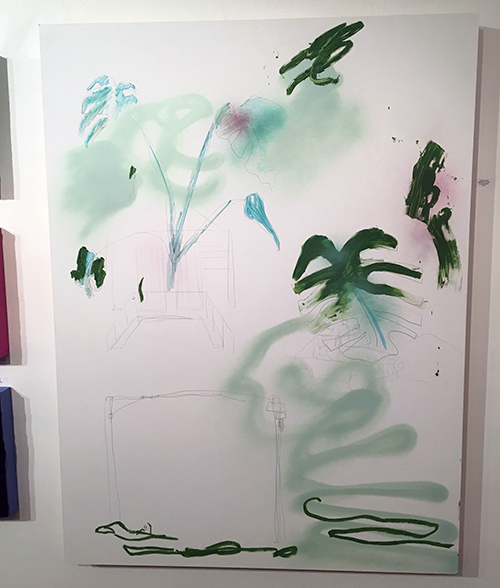
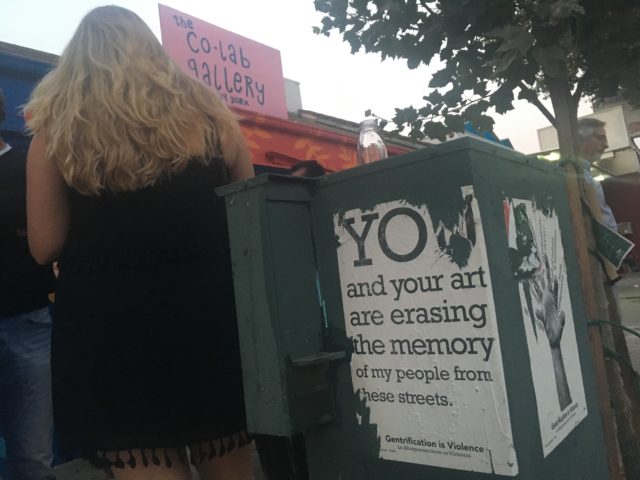
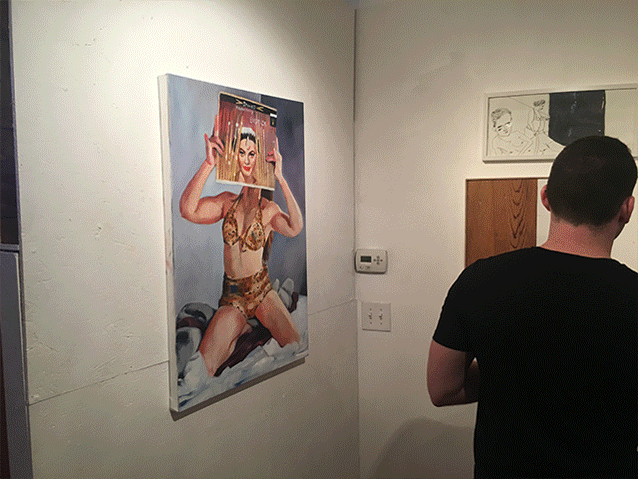
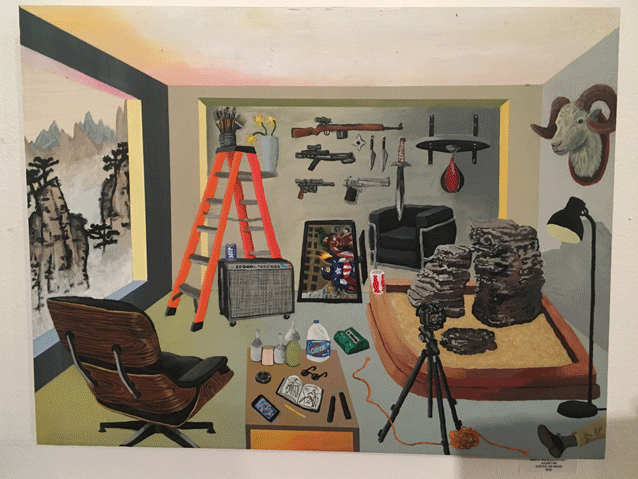
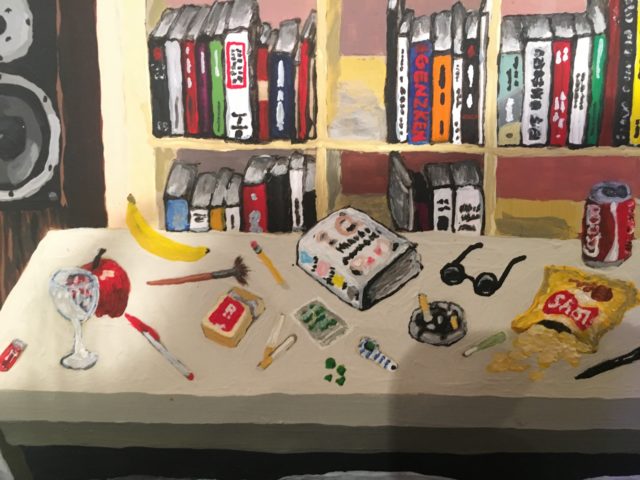

Comments on this entry are closed.
{ 1 trackback }